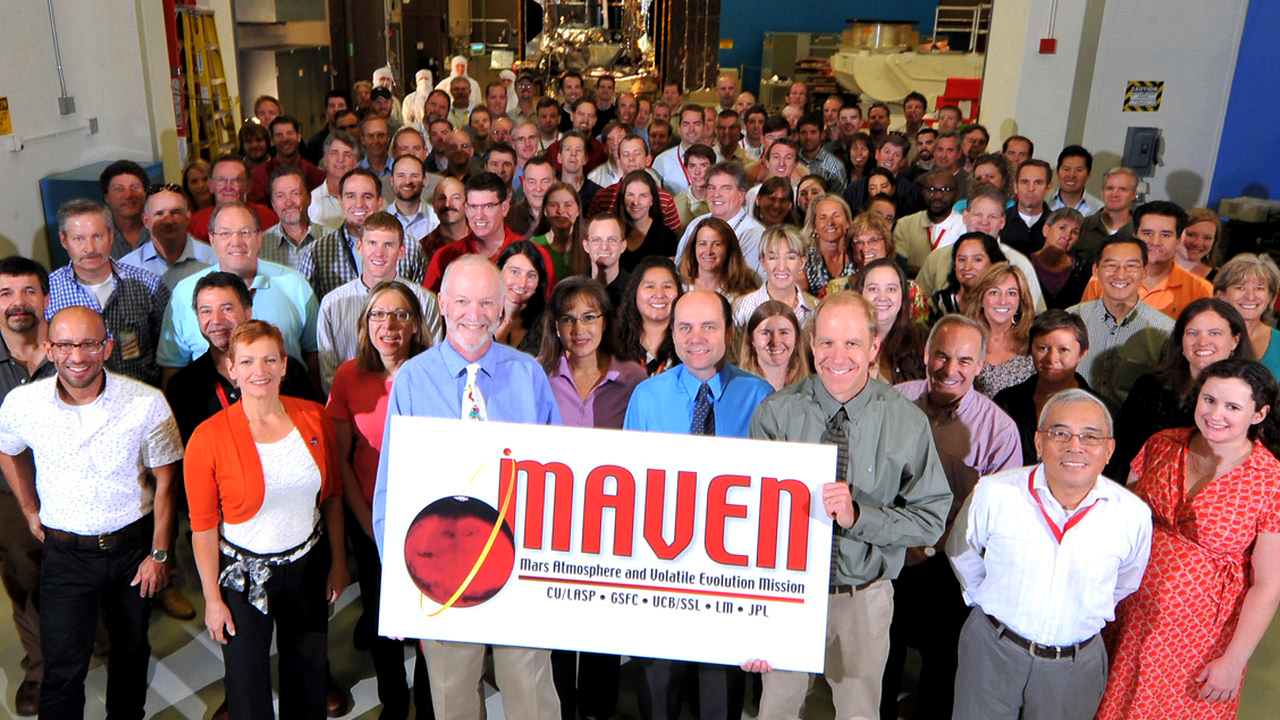Goddard Goes to Mars
The Martian climate remains one of the solar system's biggest mysteries: although cold and dry today, myriad surface features on Mars carved by flowing water attest to a much warmer, wetter past. What caused this dramatic transition? Scientists think that climate change on Mars may be due to solar wind erosion of the early atmosphere, and NASA's MAVEN mission will test this hypothesis. Project Manager David F. Mitchell discusses MAVEN and the Goddard Space Flight Center's role in sending it to the Red Planet.
How did ancient Mars evolve from a warm, wet environment into the frozen desert that we see today? NASA intends to answer this question with MAVEN, a Mars orbiter managed by the Goddard Space Flight Center.
For complete transcript, click here.
Watch this video on the NASAexplorer YouTube channel.
For More Information
Credits
Please give credit for this item to:
NASA/Goddard Space Flight Center Scientific Visualization Studio
-
Animators
- Michael Lentz (USRA)
- Chris Smith (HTSI)
- Walt Feimer (HTSI)
-
Video editor
- Dan Gallagher (USRA)
-
Interviewee
- David F. Mitchell (NASA/GSFC)
-
Producer
- Dan Gallagher (USRA)
-
Project support
- Aaron E. Lepsch (ADNET Systems, Inc.)
-
Videographer
- Rob Andreoli (Advocates in Manpower Management, Inc.)
Release date
This page was originally published on Wednesday, June 25, 2014.
This page was last updated on Wednesday, May 3, 2023 at 1:50 PM EDT.
Missions
This page is related to the following missions:Series
This page can be found in the following series:Tapes
The media on this page originally appeared on the following tapes:-
MAVEN Overview 2013
(ID: 2013054)
Wednesday, June 25, 2014 at 4:00AM
Produced by - Dan Jacob (Global Science and Technology, Inc.)

